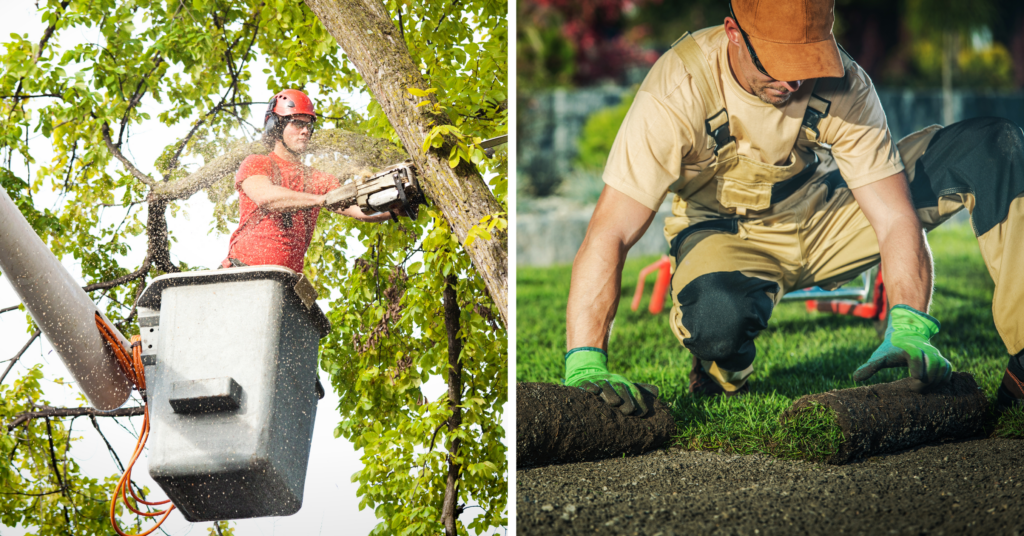Hedges are an integral part of many gardens and landscapes, providing privacy, beauty, shade, and even reducing noise. However, there might come a time when your hedge needs some significant structural changes. Whether you’re aiming to cut down on maintenance, or boost its health, altering your hedge can make a world of difference. Here’s a guide to making those significant changes.
Goals for Your Hedge
Before diving into the actual process, it’s crucial to clarify your objectives. What do you hope to achieve with these changes? Here are some common goals:
Reducing Pruning Cost
An overgrown hedge can be costly in terms of time and money. Regular pruning can be minimized by structurally shaping the hedge to grow in a particular way.
Privacy
For many, a hedge serves as a natural fence, giving seclusion from neighbours or passersby. Changing its height or density can ensure you have the privacy you desire.
Shade
A thick, tall hedge can provide shade for certain parts of your garden or home, which can be particularly beneficial in hot climates.
Health
Sometimes, making structural changes is essential for the health of the hedge. Overcrowded branches can lead to pests or disease, while thinning out or reshaping can promote better airflow and growth. Ensuring the health of your hedge is crucial, not only for its appearance but also to avoid issues like diseases or pests. Read more about how to prevent diseases and pests from harming your trees to keep your hedge in prime condition.
Hiring a Landscaper vs. Tree Service

When making substantial changes, professional assistance might be needed. But whom should you call?
Landscaper
They specialize in overall garden design and smaller hedge jobs. If you’re aiming for a particular look or want to integrate your hedge into a broader garden design, a landscaper may be the way to go.
Tree Service
These specialists are trained to handle trees and shrubs of all sizes while focusing on the health and long term goals of your trees. If your hedge’s health is at stake, or it’s very tall and requires skilled climbing or equipment, a tree service might be more appropriate. When choosing a tree service, it’s advisable to opt for an ISA-Certified Arborist as they bring a wealth of knowledge and expertise, ensuring the best care for your hedge.
Best Time of Year to Complete the Work
The ideal time for major hedge work is during its dormancy period, typically in late fall or early winter. At this time, the hedge is less stressed, and any cuts or changes made will have enough time to heal before the growing season starts. Additionally, the absence of foliage can make it easier to see the structure and make precise cuts.
However, be wary of extreme cold, as this can damage freshly pruned areas. If you’re unsure, consult a local expert such as Anchor Tree Service to determine the best period for your specific region and hedge type. Just as there is an ideal time for hedge work, there’s also a best time of year to remove trees. Understanding the seasons can play a vital role in the success of your gardening tasks.
Steps to Keep Your Hedge Healthy After Pruning

Watering
After a significant pruning, ensure your hedge gets adequate water. This helps the plant recover and promotes new growth.
Mulching
Apply a layer of organic mulch around the base. This conserves moisture, regulates soil temperature, and reduces weed competition.
Fertilizing
About a month after pruning, consider a balanced, slow-release fertilizer to support new growth.
Regular Inspection
Regularly inspect your hedge for signs of disease or pests. Catching any issues early will help maintain its health in the long run. If you’re particularly concerned about diseases, our in-depth guide on common fruit tree diseases can offer more insights on what to watch out for.
Light Pruning
As your hedge starts to grow, you might need some light pruning to guide its shape and ensure it aligns with your original goals. When it comes to maintenance, it’s important to understand the nuances between tasks. For instance, do you know the difference between tree trimming and pruning? Getting clarity can help you make informed decisions.

In conclusion, making structural changes to your hedge is a significant undertaking but, when done right, can result in a beautiful, healthy, and functional plant that meets your needs. Always consider your goals and seek professional advice when needed. Your hedge will thank you for it!
Your hedge is more than just a line of plants; it’s a testament to your property’s beauty, privacy, and health. As you’ve read, making structural changes is a significant move, but with the right guidance, it can be seamless. If you reside in Victoria, take advantage of our unparalleled tree services in Victoria, BC. Our seasoned experts are adept at hedge transformations, ensuring they’re not only aesthetically pleasing but also thriving and healthy. Ready to elevate your garden’s appeal and functionality? Reach out to us and let’s sculpt your hedge to perfection!


